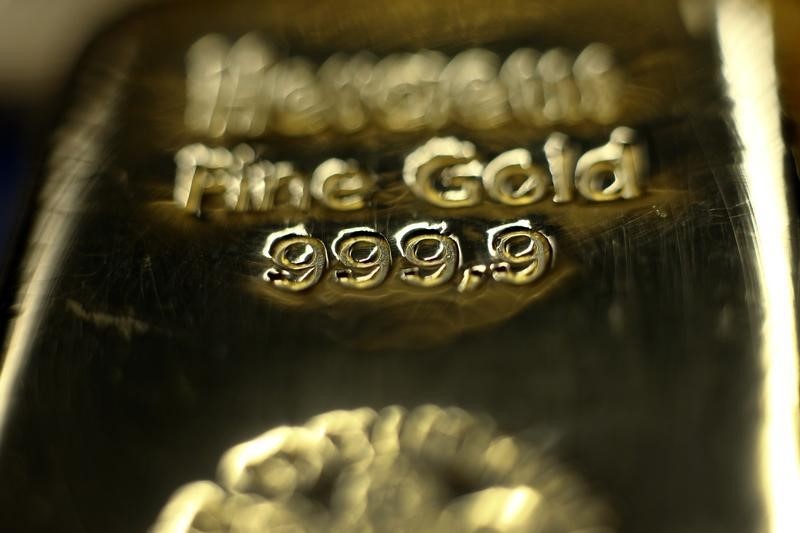Investing.com - Gold futures fell to the lowest levels of the session on Thursday, following the release of robust U.S. retail sales and jobless claims data.
On the Comex division of the New York Mercantile Exchange, gold futures for February delivery declined $8.90, or 0.73%, to trade at $1,220.40 a troy ounce during U.S. morning hours.
A day earlier, gold hit $1,238.90 a troy ounce, the most since October 23, before settling at $1,229.40, down $2.60, or 0.21%, as investors monitored political uncertainty in Greece and lower oil prices.
Futures were likely to find support at $1,199.50, the low from December 9, and resistance at $1,244.90, the high from October 23.
Also on the Comex, silver futures for March delivery dipped 10.4 cents, or 0.61%, to trade at $17.08 a troy ounce.
The U.S. Commerce Department said that retail sales increased by a seasonally adjusted 0.7% last month, beating expectations for a gain of 0.4%.
Rising retail sales over time correlate with stronger economic growth, while weaker sales signal a declining economy.
Core retail sales, which exclude automobile sales, advanced by a seasonally adjusted 0.5% in November, easily surpassing forecasts for a 0.1% increase.
Core sales correspond most closely with the consumer spending component of the government's gross domestic product report. Consumer spending accounts for as much as 70% of U.S. economic growth.
Separately, the U.S. Department of Labor said the number of individuals filing for initial jobless benefits in the week ending December 6 decreased by 3,000 to a seasonally adjusted 294,000 from the previous week’s total of 297,000.
The number of Americans applying for new jobless benefits has held below the 300,000-level for 12 out of the past 13 weeks, indicating the labor market recovery is gaining momentum.
The upbeat data added to expectations that the Federal Reserve could raise interests sooner and faster than previously expected.
Expectations of higher borrowing rates going forward is considered bearish for gold, as the precious metal struggles to compete with yield-bearing assets when rates are on the rise.
The U.S. dollar index, which measures the greenback against a basket of six major currencies, was up 0.20% at 88.43, not far from Monday's five-year high of 89.53.
A stronger U.S. dollar usually weighs on gold, as it dampens the metal's appeal as an alternative asset and makes dollar-priced commodities more expensive for holders of other currencies.
Elsewhere in metals trading, copper for March delivery inched up 1.8 cents, or 0.63%, to trade at $2.912 a pound amid expectations policymakers in China and Europe will do more to shore up their respective economies.
The People's Bank of China injected 400 billion yuan, or nearly $65 billion, into the country's banking system to counter a slowdown in the world's second largest economy.
Meanwhile, the European Central Bank said that the region's banks borrowed €129.8 billion in its second round of cheap long-term loans, below estimates for loans of €148.2 billion.
The lower than expected uptake fuelled expectations for further easing measures by the ECB, such as full-blown quantitative easing.
In the first TLTRO auction in September, the ECB allotted a less-than-expected €82.6 billion, underlining the view that the central bank will have to do more to expand its balance sheet to €3 trillion.
